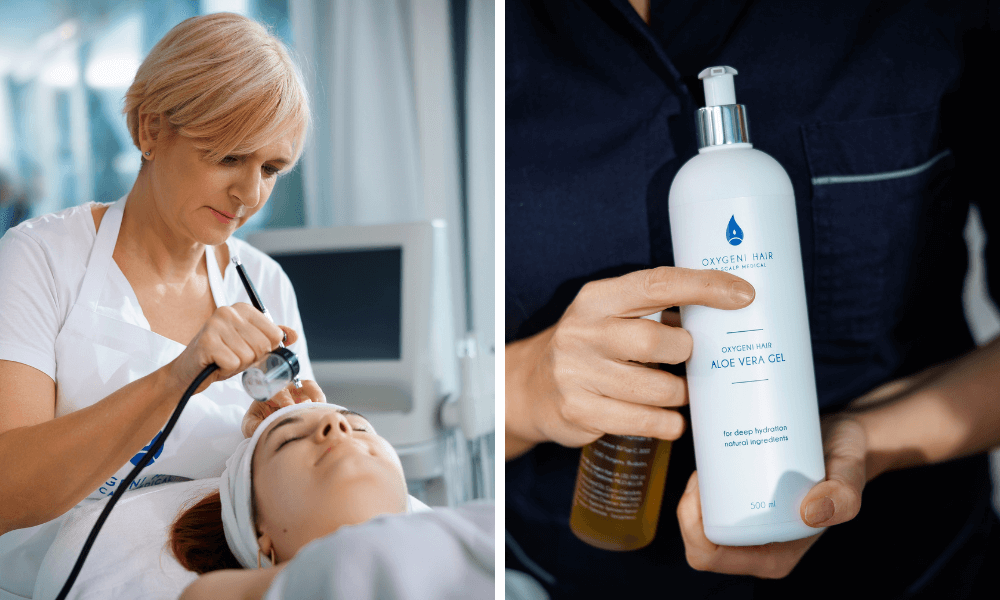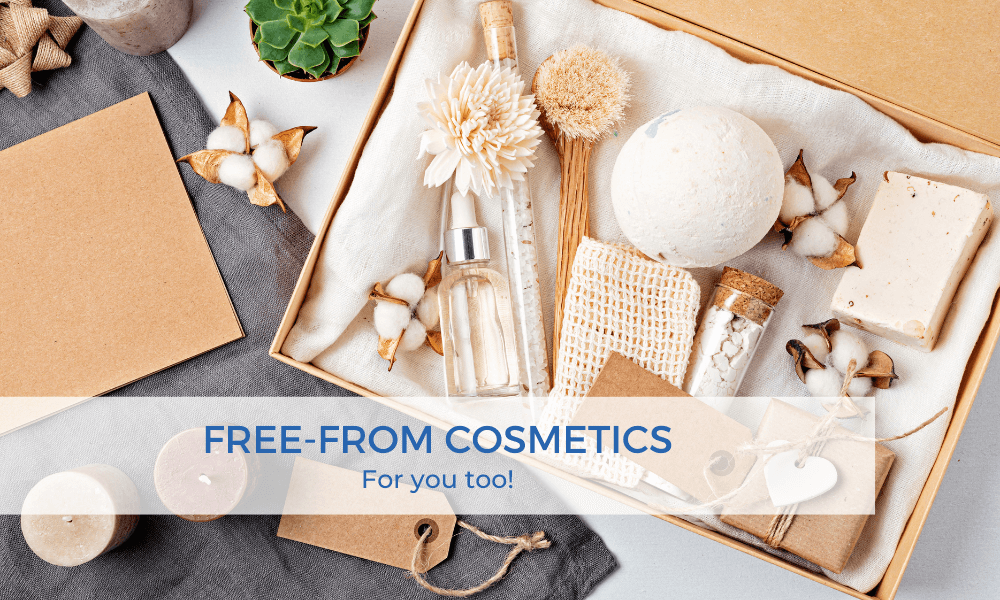
Rosacea: Causes, Symptoms, and Treatment
Rosacea is a common skin condition affecting millions worldwide. It is so prevalent that approximately 1 in 10 adults, particularly women aged 35 to 65, experience rosacea. The condition primarily affects the face, especially the central areas like the chin, nose, and cheeks. Although it is not harmful to overall health, it can significantly impact quality of life. Read our blogpost to learn about symptoms and how to manage rosacea.
What Is Rosacea and What Causes It?
Did you know that what appears to be harmless facial redness or flushing could be the first signs of rosacea? Rosacea is a chronic inflammatory skin disorder that typically affects the central areas of the face. In some cases, the neck, chest, or other parts of the body may also be involved.
Symptoms vary widely; some people experience facial redness or flushing, while others notice visible blood vessels, red acne-like bumps, or thickened skin around the nose. Rosacea is more common among individuals with fair skin and postmenopausal women.
While the exact cause of rosacea remains unknown, it is believed to result from a combination of genetic, psychological, and environmental factors. Additionally, numerous clinical studies have identified links between rosacea and gastrointestinal disorders such as irritable bowel syndrome (IBS), Crohn’s disease, ulcerative colitis, small intestinal bacterial overgrowth (SIBO), and Helicobacter pylori infection.
Among these, SIBO is particularly noteworthy. This condition is characterized by an abnormal increase in the number and/or types of bacteria in the small intestine. Typically, very few bacteria reside in the small intestine, as most of the gut microbiome is located in the large intestine. However, in SIBO, bacteria from the large intestine migrate into the small intestine and multiply. Once in the small intestine, these bacteria can cause a range of digestive symptoms and skin conditions, including rosacea.
How Do Hormones Play a Role?
Hormonal changes can significantly influence the onset and severity of rosacea symptoms. Women are particularly sensitive to these fluctuations, as life stages such as menopause, pregnancy, and menstrual cycles can all affect skin health. During these periods, rosacea symptoms often worsen.
Hormonal imbalances can increase the dilation of blood vessels beneath the skin and exacerbate inflammation. This means that with hormonal changes, the skin becomes more prone to redness and irritation. For instance, during menopause, women frequently experience hot flashes and flushing, which can intensify rosacea symptoms. Similarly, hormonal changes during pregnancy may make the skin more sensitive and trigger flare-ups.
Rosacea Symptoms
The most common symptom of rosacea is facial redness, but it can also manifest as flushing, acne-like breakouts, bumps, swelling, and visible blood vessels. These symptoms typically appear on the face, though in rare cases, they may extend to other areas such as the neck, chest, scalp, or ears. Up to half of individuals with rosacea may also develop eye-related issues.

- Flushing
Many people with rosacea experience frequent flushing. This facial redness is often accompanied by a sensation of heat, warmth, or burning, which comes and goes. Flushing is often one of the early signs of the condition.
- Bumps and pimples
Small red, solid bumps or pus-filled pimples are common in rosacea. Although they may resemble acne, they do not involve blackheads and are often accompanied by a burning or stinging sensation.
- Visible blood vessels
Many individuals with rosacea develop small, visible blood vessels on the face, particularly around the nose and other facial areas.
- Eye irritation
Many people with rosacea experience red, swollen eyelids. Without proper treatment, this can lead to severe complications, such as corneal damage and reduced visual acuity.
In addition to the primary symptoms mentioned above, burning or stinging sensations and itching may occur. Facial swelling, known as edema, can accompany other rosacea symptoms or appear independently. Raised red patches, referred to as plaques, may also form without changes to the surrounding skin.
How Can Rosacea Be Treated?
Although there is no cure for rosacea, certain medications and treatments—such as oxygen therapy, laser therapy, chemical peels, and light therapy—can be effective in managing its symptoms. It’s also crucial to make lifestyle changes, including dietary adjustments and opting for natural alternatives instead of harmful ingredients. These steps can help maintain a balanced gut microbiome, thereby reducing inflammation and improving overall skin health.
If you’re struggling with rosacea, we particularly recommend trying oxygen therapy, which can deliver remarkable improvements. Cosmetic oxygen therapy works by strengthening the immune system of the skin, making it suitable for addressing various skin concerns, including rosacea, with guaranteed visible results.
This treatment is 100% safe, risk-free, and based on natural active ingredients. By ensuring the cells receive adequate oxygen, vitamins, and minerals, the skin is revitalized, cleansed of impurities, and restored to its optimal pH balance through its detoxifying and alkalizing properties.

During the treatment, a potent active ingredient complex composed of valuable vitamins and minerals is delivered to the deepest layers of the skin, where cell metabolism occurs. Antioxidants are infused into the skin using oxygen compressed at 3 bars of pressure, preceded by a microcamera diagnosis and gentle exfoliation of the skin.
Cosmetic oxygen therapy is suitable for addressing any skin or cosmetic issue and helps reduce healing and recovery times. The treatment is entirely safe and recommended for pregnant women, mothers, and even children. It does not cause abnormal hair growth or hyperpigmentation.
Oxygen Therapy Results
Which Foods Should You Avoid If You Have Rosacea?
Foods are often among the triggers for rosacea. While not all foods cause symptoms, it’s important to consume certain items with caution. Here are some foods to avoid that may help reduce the risk of rosacea flare-ups:
Spicy Foods
Whether you’re adding hot peppers to your meals or ordering spicy dishes, it’s best to avoid them if you have rosacea. Ingredients like cayenne pepper, paprika, black pepper, curry, and other spices can dilate the small blood vessels under the skin, causing flushing. Instead, opt for milder seasonings like oregano, sage, or basil, which add flavor without contributing to redness.
Alcohol
Alcohol consumption can be particularly problematic for those with rosacea, as it can cause vasodilation, expanding the facial blood vessels and leading to redness and inflammation. A helpful tip: reduce or eliminate alcoholic beverages if you have rosacea.
Hot Beverages
Many people can’t start their day without a cup of coffee, and on cold days, hot tea or hot chocolate is a comforting way to warm up. However, if you frequently experience rosacea flare-ups, skipping hot drinks (which also increase facial blood flow and flushing) might improve your skin’s condition. This doesn’t mean you have to give up coffee or tea altogether—iced coffee or iced tea can be a better choice.

High Histamine Foods
Fruits are not only packed with nutrients and antioxidants, but some fruits also have high levels of histamine. Histamine is an organic compound that can trigger an immune response. It causes blood vessel dilation or relaxation, which can worsen rosacea. Fruits like tomatoes, pineapples, strawberries, papayas, and plums are known to release histamine. Other foods that can trigger this reaction include eggplant, spinach, mushrooms, shellfish, legumes, alcohol, and fermented foods (e.g., aged cheese).
Dairy Products
The lactose and milk proteins found in dairy can cause irritation and inflammation in some people. Additionally, growth hormones and other substances in milk and dairy products may be potential triggers. Many people experiencing rosacea have found that reducing or eliminating dairy consumption can help alleviate symptoms and reduce redness. While it may be difficult to cut dairy entirely, consider replacing cow’s milk with alternatives like rice milk, almond milk, or soy milk.
Chocolate
Chocolate is a great source of happiness, but it contains a compound called cinnamaldehyde (also found in cinnamon and several other foods), which may worsen rosacea symptoms. However, this doesn’t mean you have to give up chocolate altogether. You can opt for dark chocolate, which offers several health benefits.
Foods That Can Help with rosacea
While rosacea cannot be cured with food, certain foods play a key role in managing inflammation in the body. Many anti-inflammatory foods, such as onions, garlic, bananas, asparagus, whole grains, cherries, avocados, walnuts, and beets, can be beneficial, but there are a few particularly helpful for rosacea.
Cruciferous Vegetables
Cruciferous vegetables like broccoli, cauliflower, cabbage, kale, and leafy greens have numerous health benefits. They provide essential vitamin E, which is vital for healthy skin, and protect the skin from damage caused by free radicals. Their antioxidants and anti-inflammatory compounds can aid in managing rosacea.
Omega-3 Fatty Acids
Omega-3 fatty acids are well known for their benefits to the heart, brain, and overall health. These fatty acids, particularly those found in seafood, are especially helpful for skin issues due to their anti-inflammatory properties.
Prebiotics
Prebiotics are nutrients that feed probiotics and other microorganisms in the gut. Both probiotics and prebiotics are necessary to support gut health. To avoid rosacea flare-ups and feel your best, choose foods rich in prebiotics, such as legumes, onions, garlic, nuts, and bananas. It’s also beneficial to consume fermented foods rich in probiotics, such as kimchi, kefir, and miso.
Diet plays a crucial role in all health conditions, including rosacea. Certain autoimmune diseases are more common among people with rosacea, including celiac disease, which occurs twice as frequently as in the general population. Digestive inflammation, malabsorption, and immune system damage all affect our skin. Investigating food intolerances is key to managing symptoms.

What Else Can You Do?
Stress Management
Stress is well-known to worsen rosacea symptoms. It’s important to incorporate stress management techniques into your daily routine, such as meditation, yoga, or simple relaxation exercises. Regular physical activity can also help reduce stress levels and improve overall well-being. Psychological support or stress management counseling may also be beneficial in alleviating symptoms.
Makeup
Applying makeup on rosacea-prone skin can be challenging, but with the right products and techniques, you can achieve the desired result without irritating the skin. It’s recommended to use hypoallergenic makeup products formulated for sensitive skin, which are free from fragrances and preservatives. Choose lightweight, non-comedogenic foundations, and always use a makeup remover at the end of the day to thoroughly cleanse your skin without rubbing it.
Most Frequently Asked Questions About Rosacea
Avoid extreme temperatures, strong winds, humidity fluctuations, and direct sunlight. Use sunscreen, scarves, hats, and humidifiers at home and work to protect your skin from dehydration and irritation.
There are several cosmetic treatments to help alleviate rosacea symptoms, such as oxygen therapy and chemical peels. These treatments can help reduce redness, inflammation, and improve skin texture.
Yes, you can exercise with rosacea, but it’s important to pay attention to a few things. Avoid very intense workouts that cause heavy sweating and heat sensations. Opt for gentler activities like walking, yoga, or swimming. Cool your face with cold water during and after exercise, and use soothing skincare products.
For rosacea, choose hypoallergenic makeup products that are free from fragrances and dyes, which won’t irritate your skin.
Yes, stress can worsen rosacea symptoms because it increases the body’s inflammatory responses. Stress management techniques, such as meditation, yoga, or regular exercise, can help reduce stress and improve your skin condition. It’s worth trying different methods to see what works best for you.
To prevent rosacea flare-ups, it’s important to identify and avoid triggers, such as certain foods, alcohol, hot drinks, strong sunlight, and stress. Also, use gentle, natural skincare products, hydrate regularly, and protect your skin from environmental factors.
Rosacea skincare routine
Unfortunately, there is no permanent cure for rosacea, but the symptoms can be alleviated, improving the condition. Careful, consistent skincare plays an essential role in managing rosacea.
When choosing products for rosacea-prone skin, it is crucial to pick items that are free from irritating ingredients, fragrances, and dyes, while containing valuable, easily absorbed skin-supporting, hydrating, and soothing ingredients.
Using chemical-free products helps reduce intolerances. 100% natural active ingredients do not irritate the skin or scalp and work naturally to achieve results. Using natural products not only helps relieve symptoms but also plays a significant role in prevention! For external care, it’s worth switching your home skincare products to 100% natural and chemical-free options that help improve the condition naturally. The Oxygeni Hair & Skin products are fragrance- and irritation-free and provide a perfect solution.
Recommended Products for Rosacea

Pure Elixir
The main active ingredients of Pure Elixir are almond oil, kaolin, and vitamin B12, which contribute to nourishing the scalp and skin. It is an excellent solution for dry scalp and skin problems such as psoriasis, rosacea, eczema, or seborrhea. Due to its deep hydration effect, it is also recommended for itchy, irritated, and inflamed scalp and skin. When used for deep hydration, it reacts to heat and visibly reduces redness or flaky skin symptoms.

Pure Aloe Vera
Pure Aloe Vera is an excellent carrier product, so it can be safely used with oils and serums to help them penetrate deeper layers of the skin. It is ideal for skin issues, soothing and hydrating sensitive skin and reducing irritation.

Vitamin Serum
Vitamin Serum contains vitamins and minerals that are essential for both hair and skin. It includes quercetin, a powerful anti-inflammatory antioxidant found in grapes, which has numerous health benefits. It helps maintain the skin’s protective barrier, accelerates wound healing, protects red blood cells from damage, shields the skin from free radicals and UV rays, and soothes rosacea-affected skin.
Celebrities Who Suffer from Rosacea
Colombian actress Sofia Vergara has been struggling with rosacea for over a decade. She confessed that she had to replace many of her favorite beauty and cosmetic products with those made from natural ingredients, suitable for sensitive skin. She also makes sure to avoid heavy moisturizers and facial oils, as well as direct sunlight.
British singer Sam Smith, known for the hit song “Stay with Me,” revealed that they have been living with rosacea for years. Sam loves red wine, but unfortunately, it doesn’t do any favors for their rosacea-affected skin. Alcohol, especially red wine, is one of the main triggers for rosacea flare-ups.
Actress Cameron Diaz shared that she struggled with both acne and rosacea as a teenager and as an adult. She tried covering it up with makeup and was prescribed medication, but nothing helped in the long run. That’s when she decided to change her lifestyle, especially her diet, and soon noticed improvements.
OXYGEN THERAPY AND OXYGENI HAIR PRODUCT REVIEWS







Follow us on our social media platforms!













